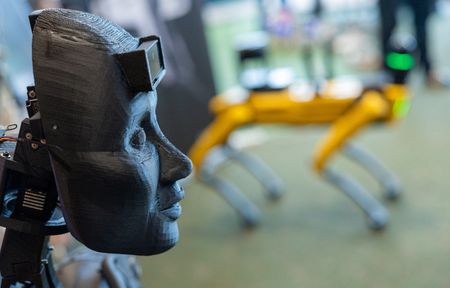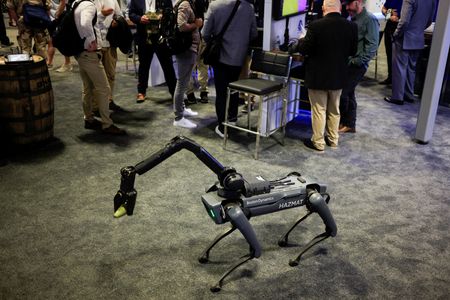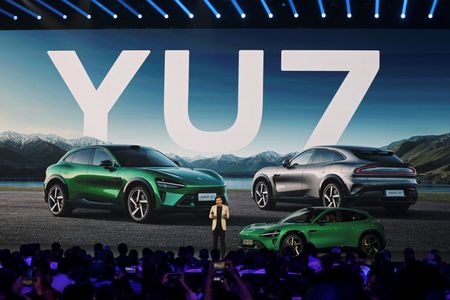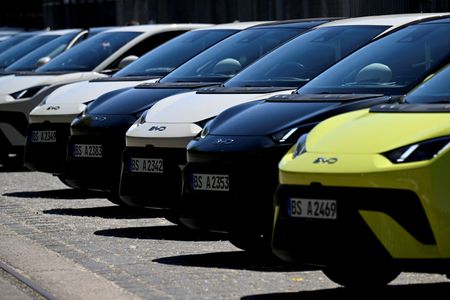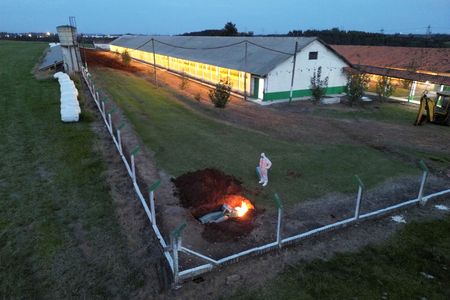By Akash Sriram
(Reuters) -These robots don’t break into a jig or jump, but their ability to do single tasks cheaply and efficiently is attracting investor dollars as focus shifts to function from flash.
Far from the sleek humanoids of science fiction that are meant for complex and adaptive work, boxy and utilitarian robots – some the size of industrial tool chests – are built to handle tasks such as hauling parts, collecting trash or inspecting equipment.
Interest has been rising in such specialized robots as they offer a clear path to profitability, given the stress on automation across industries, including retail, defense and waste management, company executives, analysts and investors told Reuters.
In contrast, makers of general-purpose humanoids are still grappling with technical challenges, including limited training data and difficulty operating in unpredictable real-world environments, to make them viable.
Data from PitchBook shows robotics companies globally raised $2.26 billion in the first quarter of 2025, with more than 70% of that capital funneled into firms making task-focused machines.
The funding reflects a broader global race to robot supremacy. From Shenzhen to Silicon Valley, companies are trying to develop machines that can take on physical work, with China emerging as a major player thanks to ample government support.
The push has been fueled by advances in chip technology, which has enabled more sophisticated AI models that allow robots to perceive, process and react without needing remote servers.
“With Nvidia’s Orin NX, we were able to put far more AI models on the edge than we could earlier,” said Saurabh Chandra, CEO of Ati Motors, referring to Nvidia’s high-performance AI chip designed to run multiple machine learning models directly on edge devices such as robots, without relying on the cloud.
Based in India’s tech capital of Bengaluru, Ati Motors makes robots that can tug around more than 1,000 kilograms on factory floors and industrial sites. Ati Motors has deployed hundreds of robots across more than 50 factories globally, including at Hyundai, Forvia, and Bosch, with its flagship Sherpa Tug logging over 500,000 kilometers in operation.
In healthcare, Austin-based Diligent Robotics is seeing traction with Moxi, a robot that handles non-patient-facing tasks such as delivering supplies, medications and lab samples.
“We’ve found that by solving a very specific problem in a high-need area like healthcare, we can create a sustainable business model,” Diligent Robotics CEO Andrea Thomaz said, adding Moxi has reached product-level profitability.
HUMANOID CHALLENGES
The interest comes as general-purpose humanoids face challenges such as teaching machines to navigate unpredictable environments and developing sophisticated reasoning abilities.
Unlike generative AI, which is trained on vast online datasets of text, images and audio, the data available to develop humanoid robots is far more limited. These machines must learn by interacting with the physical world and training on datasets focused on tasks such as stacking boxes.
Firms like Figure AI, which aims to ship 100,000 humanoid robots over the next four years, rely on advanced AI to process real-time sensory data. That means such robots are mostly confined to controlled environments such as car factories.
The cost of humanoids is also far higher than task-specific robots. Components such as cameras and lidar sensors can push manufacturing costs for humanoid robots to between $50,000 and $200,000 per unit, compared with $5,000 to $100,000 for task-specific machines, according to industry executives and a market study by startup Standard Bots.
“(True) general-purpose robots have not really been invented yet,” said Marc Theermann, strategy chief at Boston Dynamics, adding that “if somebody claims that they are commercially finding a general-purpose robot, they are over-promising and they will under-deliver.”
While the company’s Atlas robot has made headlines with viral clips of it leaping, flipping and dancing, Theermann said the value currently lies in targeted designs. Its four-legged robot, Spot, excels in hazardous industrial inspections, a narrow but lucrative niche.
Era Ventures has backed ViaBot, whose autonomous machines manage trash collection in parking lots. Parkway Venture Capital has diversified its bets between Siera AI’s forklift automation and Figure AI’s humanoid ambitions.
“You’ll see a transition where there will be robots built for a task doing something very useful, very cost-effectively,” said Raja Ghawi, Partner at Era Ventures. “And as that gets better, people will realize there is a good reason to have a full humanoid.”
(Reporting by Akash Sriram and Jaspreet Singh in Bengaluru; Editing by Aditya Soni and Anil D’Silva)

